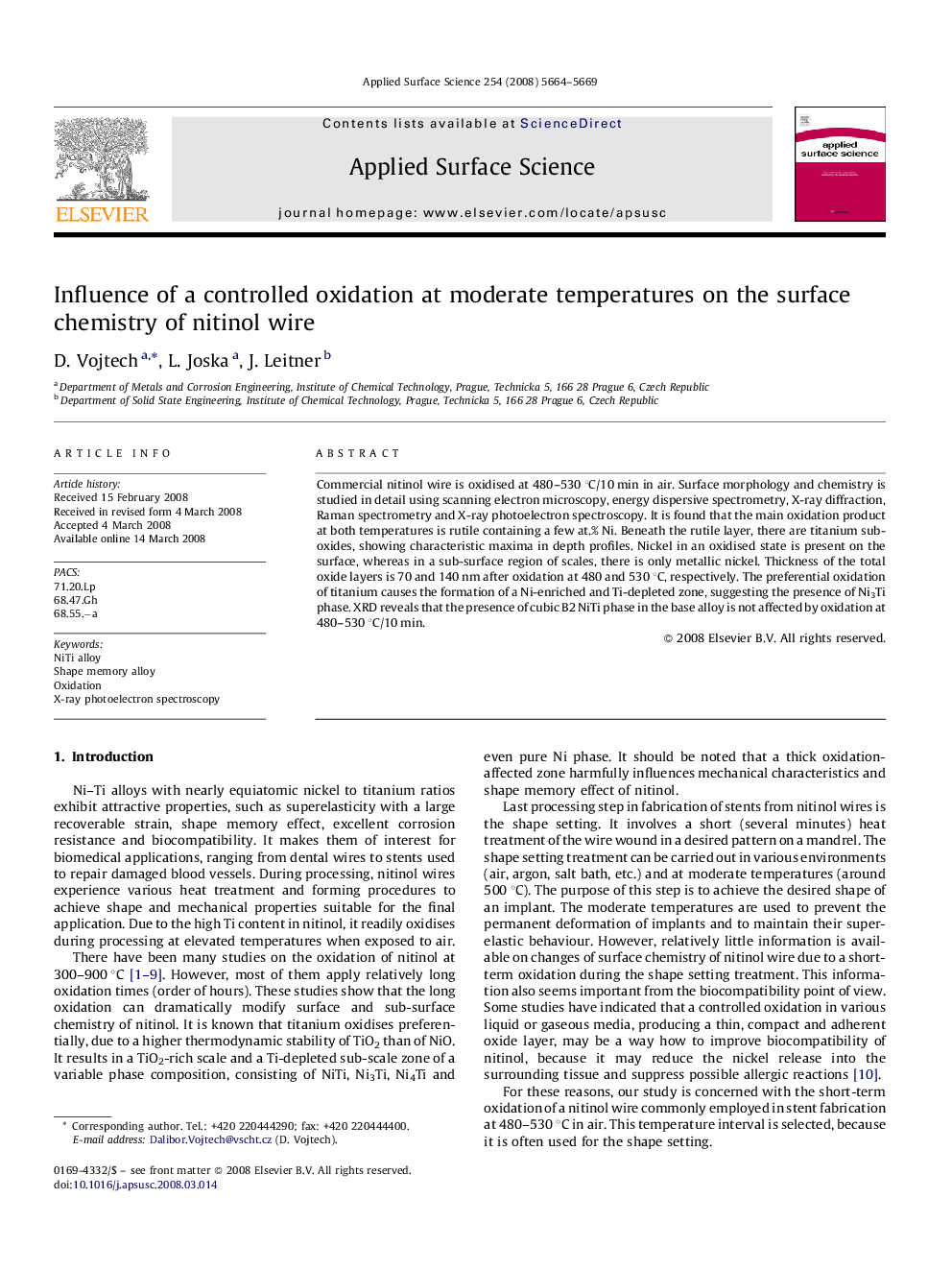| Article ID | Journal | Published Year | Pages | File Type |
|---|---|---|---|---|
| 5362355 | Applied Surface Science | 2008 | 6 Pages |
Abstract
Commercial nitinol wire is oxidised at 480-530 °C/10 min in air. Surface morphology and chemistry is studied in detail using scanning electron microscopy, energy dispersive spectrometry, X-ray diffraction, Raman spectrometry and X-ray photoelectron spectroscopy. It is found that the main oxidation product at both temperatures is rutile containing a few at.% Ni. Beneath the rutile layer, there are titanium sub-oxides, showing characteristic maxima in depth profiles. Nickel in an oxidised state is present on the surface, whereas in a sub-surface region of scales, there is only metallic nickel. Thickness of the total oxide layers is 70 and 140 nm after oxidation at 480 and 530 °C, respectively. The preferential oxidation of titanium causes the formation of a Ni-enriched and Ti-depleted zone, suggesting the presence of Ni3Ti phase. XRD reveals that the presence of cubic B2 NiTi phase in the base alloy is not affected by oxidation at 480-530 °C/10 min.
Keywords
Related Topics
Physical Sciences and Engineering
Chemistry
Physical and Theoretical Chemistry
Authors
D. Vojtech, L. Joska, J. Leitner,
